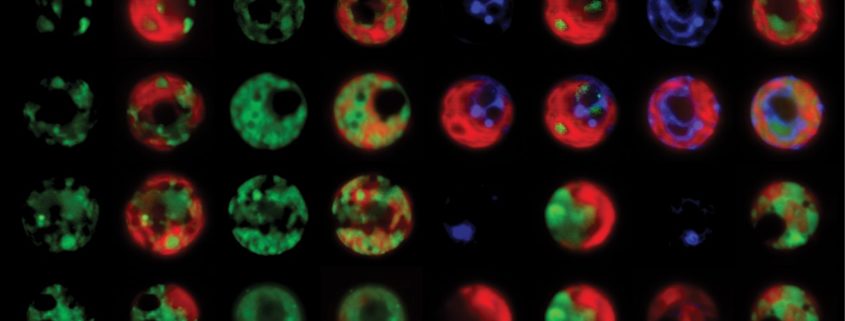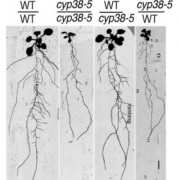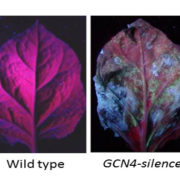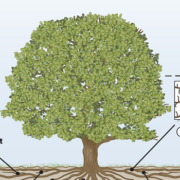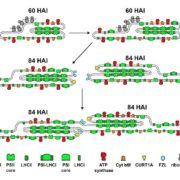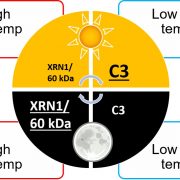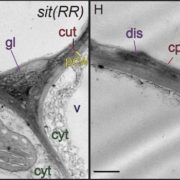Saving Algae from Environmental Stresses
Du et al. investigate an important protein that regulates photosynthesis under stress. Plant Cell. https://doi.org/10.1105/tpc.17.00446.
Background: Photosynthesis is the process that converts sunlight into usable energy that powers life on Earth. It begins when sunlight hits “solar panels” called thylakoids inside the chloroplasts of plants and algae. Similar to solar panels, thylakoids are made of layers of film containing antennae that capture light and miniature machines that process it. The thylakoid film material is made of lipids that are similar to those found in fats. The film layers increase or decrease in size to adjust productivity levels – the more film, the more machines, the more photosynthesis happens. If an organism is under stress, photosynthesis needs to be dialed down, or else the organism could die. So lipids are changed or removed to “downsize” the thylakoid film until the danger passes.
Question: We investigated the alga Chlamydomonas from two sides. First, we wanted to understand how thylakoid lipid film changes make-up and size. Second, we wanted to examine how different types of environmental stresses would affect the alga’s ability to adjust its thylakoid lipid film.
Findings: We focused on a major protein called PGD1, which helps control the amount and make-up of thylakoid film lipids. In particular, PGD1 affects the most abundant molecule, called MGDG, that accounts for around 50% of the film lipids. Genetic removal of PGD1 from the alga changed the thylakoid film layer, affecting the distribution of the antennae and other components. Tackling the second question, we exposed the Chlamydomonas strain lacking PGD1 to different environmental stresses that algae encounter in nature – like nitrogen deprivation (nitrogen being an important component of all proteins), cold temperatures, and high salt concentrations. The alga lacking PGD1 couldn’t adjust the film layer to dial down photosynthesis under stress. This led to a dangerous situation where it accumulated toxic by-products that reduced its growth.
Next Steps: We are studying how the make-up of the thylakoid film layer affects photosynthetic productivity. In a laboratory setting, we will expose algal strains with different lipid make-ups to stressful conditions mimicking the outdoors. Ultimately, we aim to develop algae with higher resistance to environmental stresses to improve photosynthesis yields in aquaculture.
Zhi-Yan Du, Ben F. Lucker, Krzysztof Zienkiewicz, Tarryn E. Millera, Agnieszka Zienkiewicz, Barbara B. Sears, David M. Kramer, and Christoph Benning. (2018). Galactoglycerolipid Lipase PGD1 Is Involved in Thylakoid Membrane Remodeling in Response to Adverse Environmental Conditions in Chlamydomonas. Plant Cell. https://doi.org/10.1105/tpc.17.00446.


